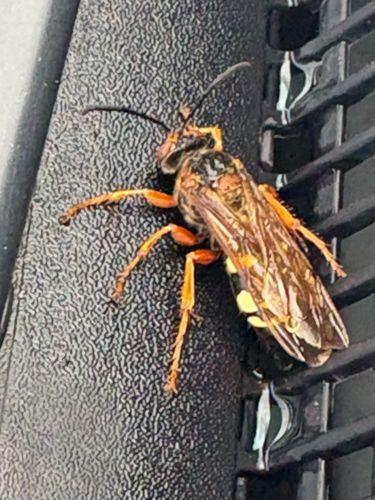Eastern Cicada Killer Wasp
Scientific Name: Sphecius speciosus
Order & Family: Order: Hymenoptera, Family: Crabronidae (formerly Sphecidae)
Size: Females typically range from 25-50 mm (1-2 inches) in length, while males are slightly smaller, 15-30 mm (0.6-1.2 inches).

Natural Habitat
Cicada killers prefer areas with loose, sandy, or well-drained soil for burrowing. They are often found in lawns, gardens, golf courses, and along the edges of wooded areas where cicadas are abundant. They need access to flowers for nectar and cicadas for their offspring.
Diet & Feeding
Adult cicada killer wasps feed on nectar and plant sap. Their larvae, however, feed exclusively on paralyzed cicadas that the female wasps provide.
Behavior Patterns
Cicada killers are solitary wasps, meaning they do not live in colonies like social wasps (e.g., yellow jackets). The females dig burrows in the ground, often in sunny, well-drained areas. They hunt cicadas, paralyze them with their venom, and carry them back to their burrows to provision their larvae. Each burrow cell receives one paralyzed cicada and one egg. Males are territorial and will often fly around their chosen areas, chasing away other males or even people, but they cannot sting.
Risks & Benefits
Potential risks include alarm and minor nuisance due to their large size and buzzing flight, but they are generally not aggressive towards humans unless provoked or handled. Only female cicada killers can sting, but they rarely do unless directly threatened or grabbed. Their sting is usually compared to that of a bee sting and is not considered medically significant unless an individual has a severe allergic reaction. Benefits include their role in preying on cicadas, which can be considered a pest in some areas, and their pollination services as adults feed on nectar.
Identified on: 8/22/2025